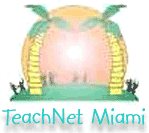

|
How It Works:
Maya-mian Web quest is a simulation cooperative learning project specifically designed
to increase an awareness of multiculturalism through the use of the Internet.
The major focus of this project is to teach students in grades three, four or
five about Mexican Culture using technology as its vehicle. It is
interdisciplinary as it addresses the National Educational Technology
Standards (NETS) which were developed by the International Society for
Technology in Education (ISTE) in reading, writing, social studies,
mathematics, foreign language, and technology. Standards: The National Educational Technology Standards (NETS)
addressed in this project are: Estimated Class Periods To Complete: 10 or more Software Materials Used: Students need to have access to the Internet. They need a word processing program such as Microsoft Works, Word, or Claris Works or Apple Works to copy and paste information, graphics, maps, graphs, etc. to their document. They need a printer and a scanner or digital camera for embedding information brought from other sources. A digital video camera is a must for iMovies. A presentation program such as iMovie, PowerPoint, Inspiration, HyperStudio, or the like is needed to produce the final presentation. And finally, a projector to show the presentation to peers, staff, and parents. Keywords: Mexico, Mayan Ruins, Dolphin Mall, Maya, web quest, archeology, Mexican culture, history Students: This project is designed for third, fourth and fifth grade students. This project would greatly benefit academically challenging students because they would be working in collaborative groups where everyone has an equally important role. This model allows all students to share information gathered, researched or acquired from one’s own experience or culture, thus creating a total involvement of everyone in the group. Overall: The most valuable
feature of this project is that students learn to work with each other,
in a heterogeneous setting, preparing them for tomorrow’s work force. They learn that the work place is full of diverse individuals who bring with
them unique personalities, strengths and weaknesses, yet must work together
for a common purpose. Tips: When selecting the groups of students, make sure that each group is heterogeneously comprised of academically challenged and advanced students. Allow students to come up with their own ideas for the presentation. Acknowledge creativity and uniqueness. Invite parents, community members, and staff to see the presentations. |
About the Teacher: Rosa Duarte
is in her 26th year working for Miami-Dade County Public Schools. Holding a
Master’s Degree in ESE, she specialized in autism. She was a Staffing
Specialist in Region 4 and a District Support Teacher for the Autistic
Program. She received her Educational Specialist in Computer Applications and
in 1996, became the Technology Coordinator/Computer Teacher/ Webmaster at
Southside Elementary. Subjects: Foreign Language and Social Studies Grade Levels: 3 through 5
|
What do you think of my
project? I'd really like to hear your opinion -
Click here for a very brief survey.